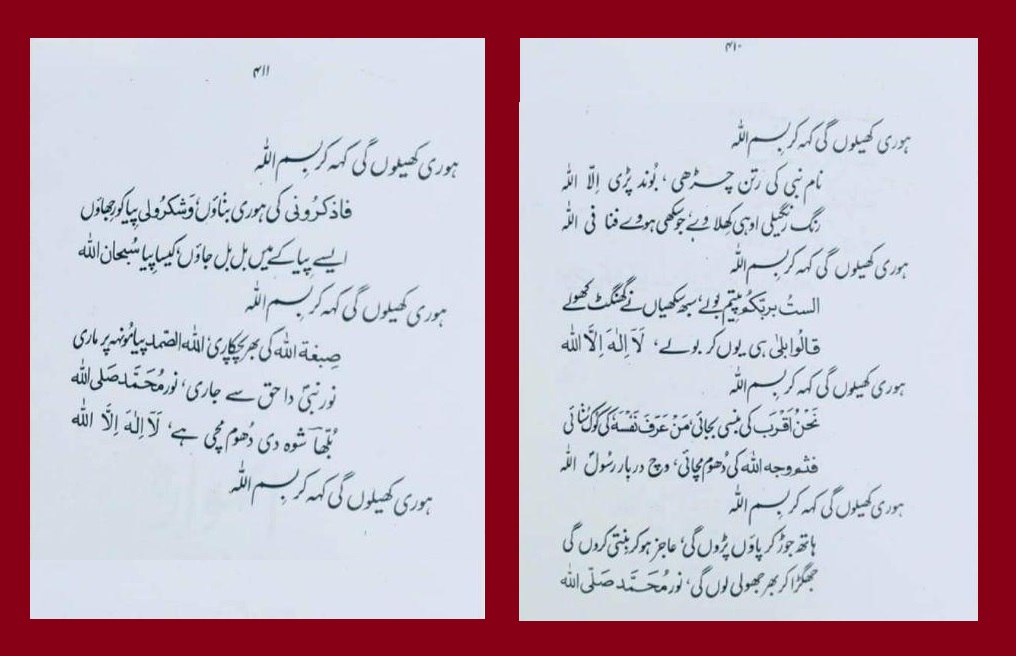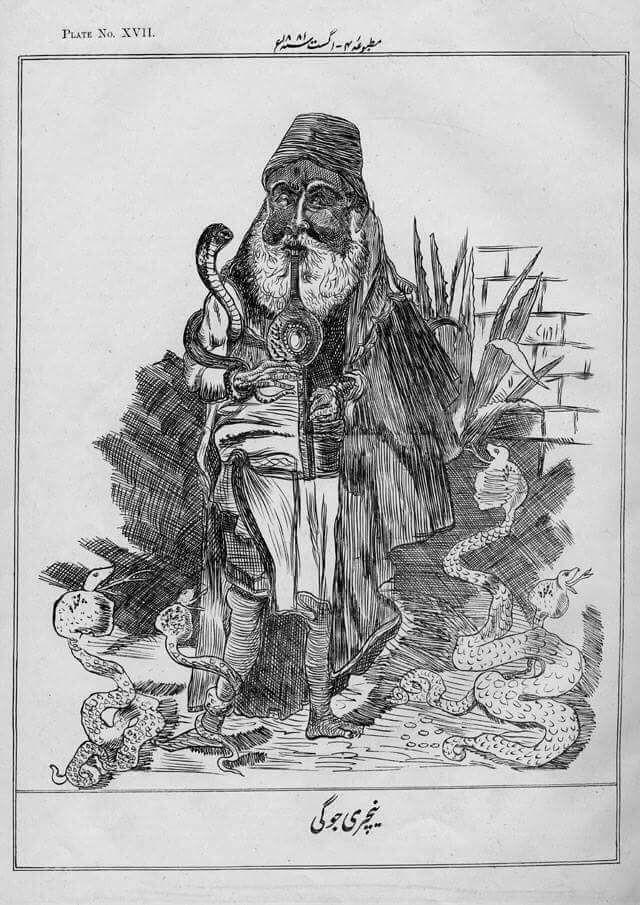By Naved Ashrafi for TwoCircles.net
Sir Syed Ahmad Khan—the founder of the Aligarh Muslim University (AMU)—died on 27th March 1898. A day before his death anniversary, a group of AMU students reportedly turned hostile to their own alumna Arfa Khanum Sherwani at the unprecedented Women Leadership Summit 2019 organized by AMU’s Women’s College Students Union (WCSU) during 26-28 March 2019.
It was alleged by the protesting students that Sherwani had put some objectionable content on her social media profiles at two different instance that went against the classical pristine ethos of Islam. She allegedly ridiculed the hijab and used Quranic phrase bismillah (in the name of Allah) to justify her ‘un-Islamic’ act of celebrating Holi on social media platforms.
Online hullabaloo and trolling preceded the actual protest when on 20th March the lady journalist from The Wire tweeted her picture with the text holi khelungi keh ke bismilla (I shall celebrate Holi invoking Allah’s name). Though, not put in verbatim, the quoted text was from a master-piece of 17th century Sufi saint Hazrat Syed Abdullah Shah Qadri popularly famed in the sub-continent as Baba Bulleh Shah.
One has all liberty to pursue a critical debate on why bismillah was used by the journalist or one may out rightly reject the Holi celebration questioning—in feminist parlance—its very rationale or terming it ‘a festival to commemorate Bahujan burning’; but all that should be done with a spirit of rational decency on cultured line of arguments.
Bulleh Shah and his Poem
Bulleh Shah (1680-1757) was a Sufi saint and a Punjabi poet who lived in the land we now identify as Pakistan. He belonged to the Qadri Silsilah—principal spiritual school of Sufism and Hazrat Shah Inayat Qadri was his murshid (spiritual master). He was contemporary of Sufi mystics like Hazrat Shah Abdul Lateef Bhitai, Hazrat Sachal Sarmast, Hazrat Waris Shah and Urdu poet Mir Taqi Mir.
His poem hori khelungi keh kar bismillah—otherwise termed as ‘un-Islamic’ by social media’s ignorant trolls—was written with deep hues of Sufism making ample references to the Quranic verses in the couplets: bismillah (Quran, Chapter 01:Verse 01), Ill-Allah (47:19), fana-fillah (55:26-7), alastu-bi-rabbikum (07:172), qaalu-balaa (07:172), la-ilaaha-ill-allah (47:19), nahnu-aqrab (50:16), man-arafa-nafsahu (59:19), faa-summa-wajhullah (2:115), Rasulullah (48:29), Muhammad-sal-lallah (48:29), fazkuruni (2:152), washkuruli (2:152), subh-han-allah (37:159, 52:43), sibghatullah (2:138), and allahus-samad (112:2).
This poem entirely engrossed in Quranic context reflects upon the relationship between a devotee and her God which Bulleh Shah visualises as ‘a relationship of love’. It must have not irked people [even those who cultivate certain kind indifference to social-syncretism] as the poem nowhere mention mythological figures like Vishnu, Prahalad, Holika and Hranyakashyap! I shall be curating over deeper insights in to the poem on some other day, let me now focus more Islamic-unIslamic debate prevailing on the campus.

Point of Debate
On 8th February, what Sherwani put out rightly in her tweet on niqab, seemed more an irrational injunction than a sensible comment. Her tweet looked ostentatious, thespian and fancy. Many things, other than niqab, for which ‘Quran certainly doesn’t ask’ are a part of Islamic traditions globally owing to greater macro-environment, spatial-temporal dynamics and theological/cultural evolution. This may include diverse ways of offering 5-times prayers by Muslims in different parts of the world, different Prophetic narrations on a single subject mentioned in Hadith literature by different Imams, getting yourselves photographed for a passport to perform Hajj, and of-course syncretic Sufi tradition of rejoicing basant at the shrine of Hazrat Nizmuddin Auliya in Delhi.
Sherwani or this author may not be an ‘authority’ to dictate on what Quran ordains for the people to follow because we lack theological ‘legitimacy’. Still, if we do so, we shall be akin to that small crowd of AMU who in 2017 made it to ban the campus for Shehla Rashid as her more than one-month older post on Facebook immediately cropped up and allegedly made a case for blasphemy. Crowd ruled this injunction without delving in to the nuances of theology and consulting the university experts in departments of Theology, Arabic, Islamic Studies and Office of the Nazim.
So, people, including this author, at AMU were not cosy with Sherwani but it is very unfortunate that this popular despondency turned awful on social media. Trolls started putting continuous filth on social media and nobody came out with a strong rejoinder written with subtlety, legitimacy and authority contesting the journalist. Later, Sherwani’s 20th March tweet turned the simmering popular angst in to the high-voltage drama!
What is at Stake in AMU?
Many orthodox Islamic students’ group operate on the campus with no legal sanction from the university administration. They represent one or the other faction of Balkanised Indian Islam of Sunni, Barelvi, Deobandi, Salafi, Wahabi, Shia and so forth. Each of these groups have been considering themselves as the true saviour of pristine Islam thereby calling the other religious groups as ‘defiant sect’. Now, burying the hatchet, they have found a common enemy for themselves i.e. Cultural Education Centre (CEC). Latter is an institution run by the university for promoting co-curricular excellence among the university students. The centre, formerly known as General Education Centre (GEC), was constructed in 1950s with the aid of Ford Foundation, USA. As of now, the centre has many clubs that organize National level programs like AMU Literary Festival, national music festival Sur, national fest on theatre Ensemble.
These orthodox Islamic groups have now started calling themselves ‘saviour of Aligarh Tehzeeb’ and ‘vicegerent of Sir Syed’. Because CEC is a post-Sir Syed phenomenon, and does not fall under his mission of creating Muslim youth equally conversant with the Quran and the Modern Science concomitantly, it must be abandoned and deserted, they argue. Once Sir Syed Ahmad Khan was lamented by his contemporary orthodox Muslims as Darwin inspired natury jogi who used to dine with spoon and forks and who mis-interpreted Quran in broad-day light (which earned him fatwas). With all this in the backyard, orthodox boys have now started to induct Sir Syed in their orthodox sphere as the BJP has done to an atheist (Bhagat Singh) and a communist (Raja Mahendra Pratap)!
Tehzeeb of Aligarh and Sir Syed
Now, it is very much pertinent to unravel Sir Syed’s perception of religion, education, society, and freedom. While Sir Syed had best arrangements for religious education at Mohammadan Anglo-Oriental (MAO) College under experts like Allama Shibli Nomani, Sir Syed’s quest for secular education was aimed at reclaiming those rights of Indians that were forfeited by the British. In a lecture, he said, ‘Indian must be educated to such a high level that they may be capable for reclaiming their own rights’. Similar view was endorsed by Sir Syed at Amritsar Town Hall which shows the pragmatism of Sir Syed regarding the aims of religious and secular education.
He enlightened people to deal with social problems and religious traditions in a rational and empirical way. ‘New problems are now solved empirically and not by intuition while sitting in mosque, hospice and khanqah’, he asserted. To Sir Syed, ‘reason’ was an important touchstone to testify religious dogmas as he clearly put in one of his lectures, ‘I have devised ‘human nature’ as an important tool to testify if the religious doctrines are congruent to the human nature or not’.
Historian Khaliq Ahmad Nizami maintains that Sir Syed propounded two tenets for his concept of ‘nation’. Sir Syed, argues Nizami, had put that a nation (qaum) is not premised upon the religions (mazahib) and that all the dwellers of India constitute one nation (qaum). Sir Syed was a great champion of freedom of expression. In Tahzibul Akhlaq, he wrote that stifling the free opinions whether due to religious fear, or social apprehensions or government oppression was extremely bad thing.
So, Sir Syed had left a legacy of knowledge, wisdom, scientific temper, reason, empiricism, and freedom of expression without tinkering with the spiritual domain of man. He discouraged short-sightedness, ignorance and dogmatism. A certain kind parochialism and ignorance that has crept within a section of students is alarming, for it is against the Aligarh trend historically known as the Aligarh Tehzeeb.
Shakeel Badayuni, poet and lyricist, carried this tradition by writing many devotional numbers for Bollywood films sans any religious prejudice. He had written, in the eulogy of Prophet Muhammad, numbers like beech bhanwar me aan phansa hai, bekas pe karam kijiye Sarkare Madina. Notably, Shakeel is one of those lyricists who had composed highest of Bhajan numbers.
Hasrat Mohani was a revolutionary alumnus of the Aligarh College, who coined Inquilab Zindabad, and participated in Constituent Assembly Debates, and was among the founders of Communist Party of India. He was that ‘maulana’ who loved Lord Krishna and wrote poems for his beloved.
Majaz, another champion of revolutionary zeal, who invoked ‘surkh-aandhi’ (red thunderstorm) of communism in his celebrated piece Inquilab, penned down famous Nazre Aligarh that later became University Tarana (Anthem of the University). Then, there are Majrooh Sultanpuri, Josh Malihabadi, Khwaja Ahmad Abbas, Aale Ahmad Suroor, Ismat Chughtai, Shaharyar and others. Apart from these people, there is Allama Iqbal who had written extensively on Lord Ram, Lord Shiva, Guru Nanak, Gautam Buddha, Swami Ramteerth and others. Iqbal was closely associated with the Aligarh Movement and is still considered as a great asset of the Aligarh phenomenon.
Reclaiming Aligarh
Celebrating pluralism and diversity has been a relic of Aligarh from the distant past. If debating on issues with rationality, talking about socialism and communism, organizing literary and music festivals, rejoicing Bulle Shah and Amir Khusrau is against the spirit of Aligarh, will AMU now afford to disown Shakeel Badayuni, Majaz Lakhnawi, Hasrat Mohani, Allama Iqbal, and even Sir Syed? Aligarh should keep its spirit alive and Bulleh Shah must not haunt it! University administration must keep a vigilant eye on campus dynamics and should come out of any impunity. Next year, AMU will complete hundred years of its existence as university and it is high time to renew pledges with great zeal and scientific temper.
Note: All quoted text in the article is from Sir Syed aur Aligarh Tehreek by Kahliq Ahamd Nizami.
Naved Ashrafi is a research scholar at AMU.

